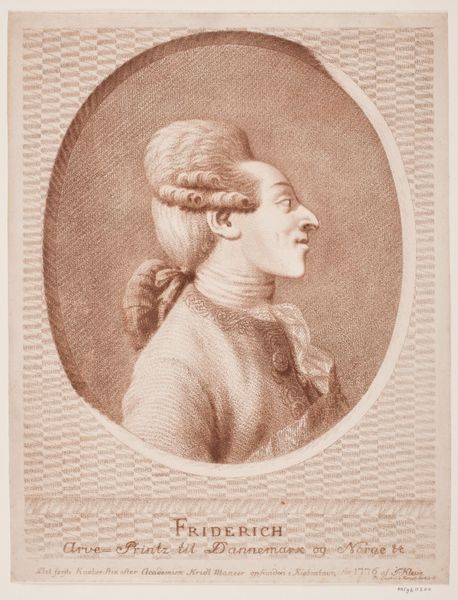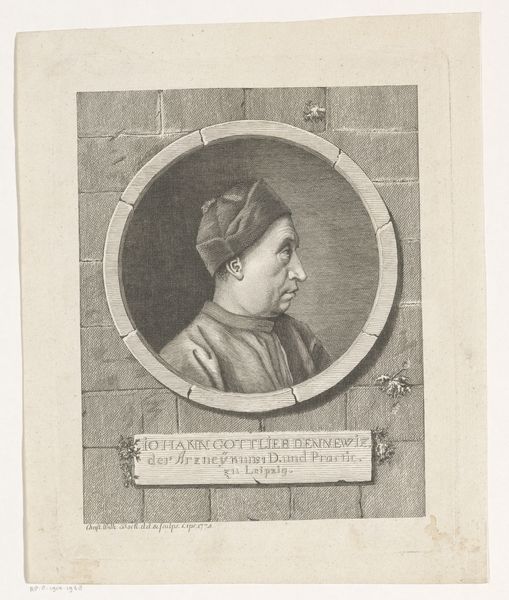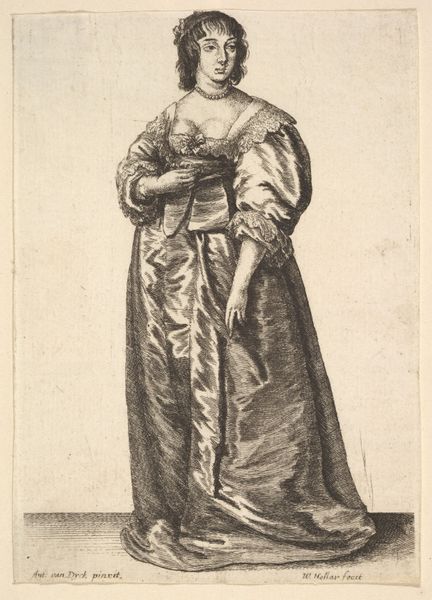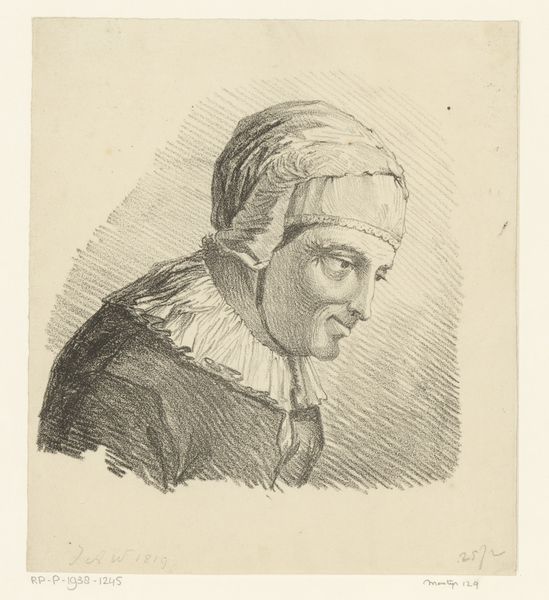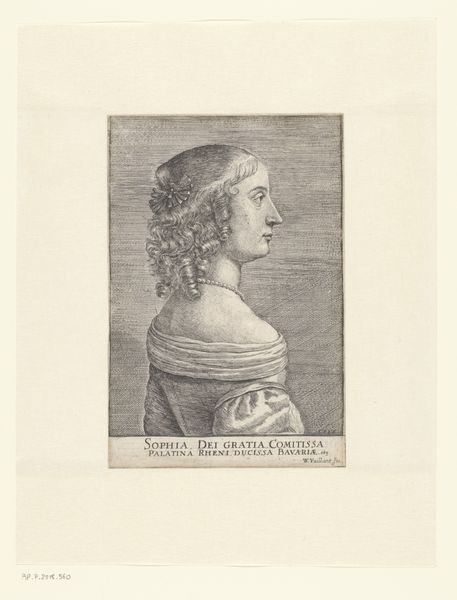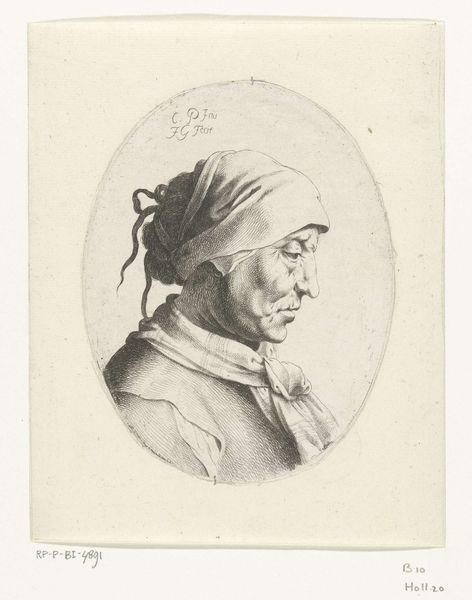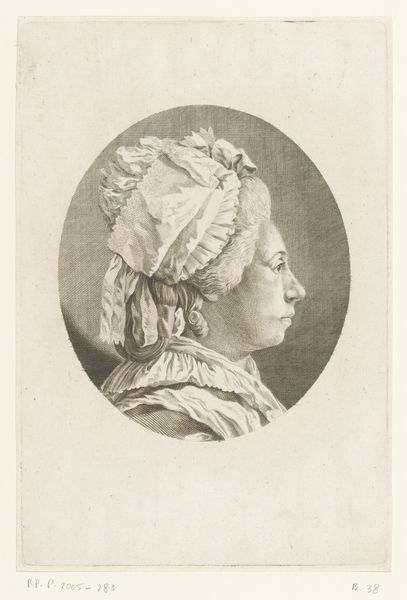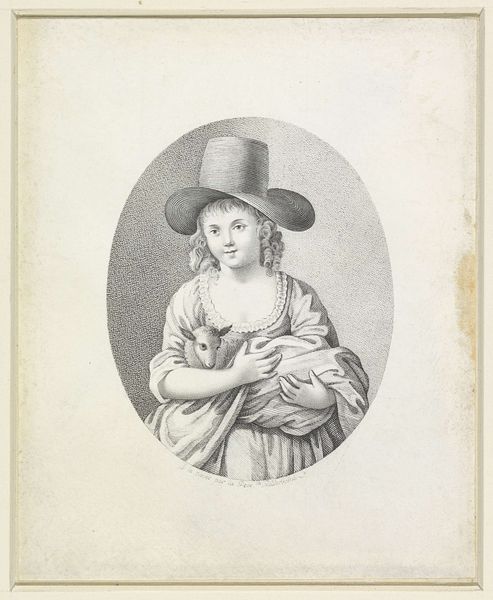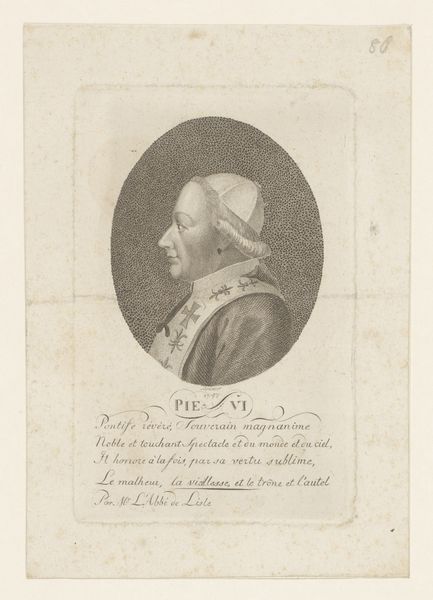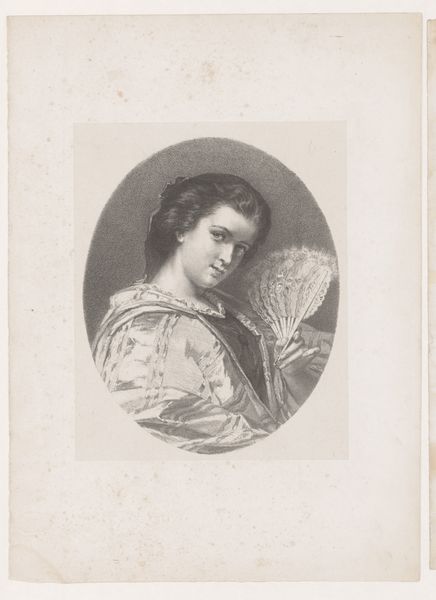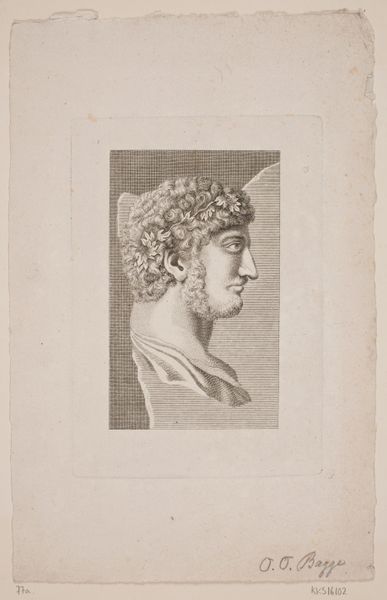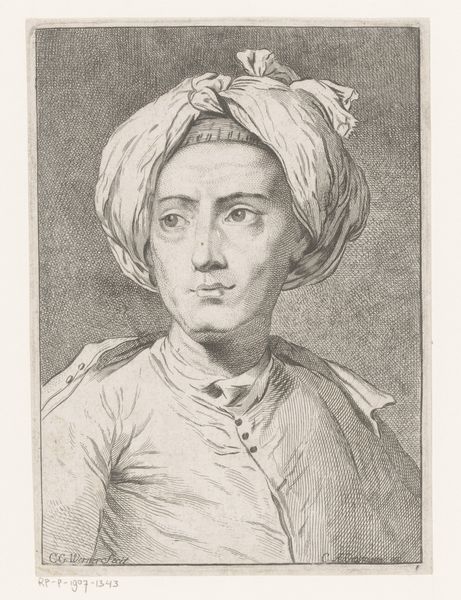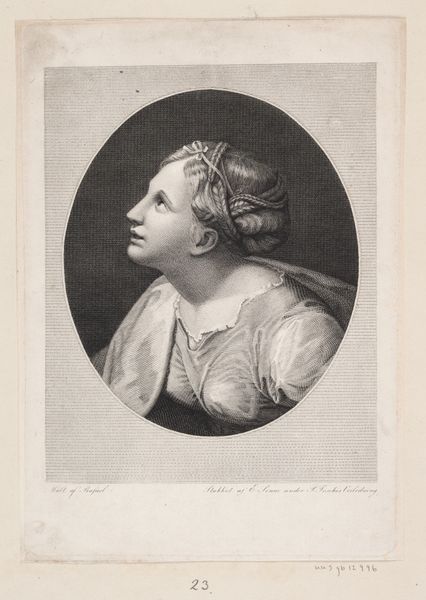
Dimensions: 123 mm (height) x 96 mm (width) (plademaal)
Editor: So, this is "En yngre Dame i Profil" from 1763, by W.A. Müller. It's an engraving. The detail achieved with what I imagine were limited tools is remarkable, especially on the frills of her bonnet. How do you interpret the materials and method in this portrait? Curator: Look closely at the labor involved. Engraving demands a meticulous process. Each line, each shadow, a direct result of physical effort, shaping metal to create reproducible images. Consider the socioeconomic implications. Who could afford portraits, and what does mass production mean for accessibility to imagery? Editor: That's interesting. So you're saying it's less about the individual portrayed, and more about how prints democratized images? Curator: Precisely! The materiality itself becomes the message. An engraving like this speaks volumes about the burgeoning print culture and its impact on social hierarchies. Before photography, this was how images were disseminated. Notice, for instance, the relative lack of shading compared to later eras. This economized on labor and material, making more prints available. How do the constraints of the medium influence your perception? Editor: It makes me think about reproducibility and distribution networks that allowed images and, implicitly, ideas to spread like never before. Also how artists and artisans were adapting traditional methods to changing markets. It sounds as if it's more than just a pretty picture! Curator: Exactly! Considering art as a product of specific labor processes deepens our understanding. This piece embodies the transition from unique art object to mass-produced image and the economic impact on artisans like Müller. It shows how these skills have impacted society by evolving the traditional norms. Editor: I see it so differently now, understanding the technique puts the art into a wider societal context! Thanks! Curator: My pleasure, that's why looking at how art comes to be, its materiality, brings to light different aspects of its origins!
Comments
No comments
Be the first to comment and join the conversation on the ultimate creative platform.

